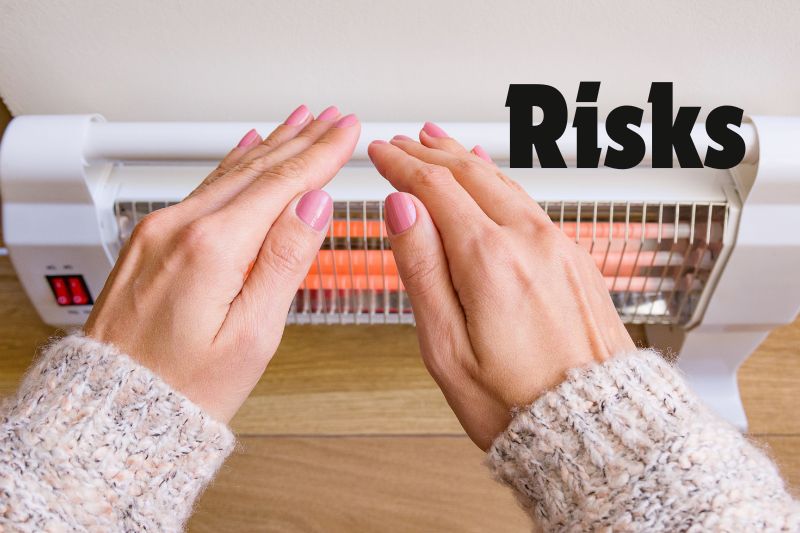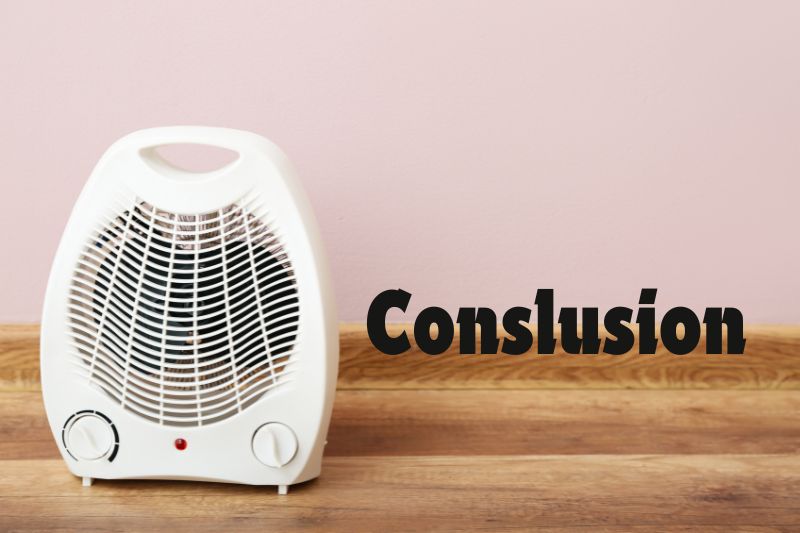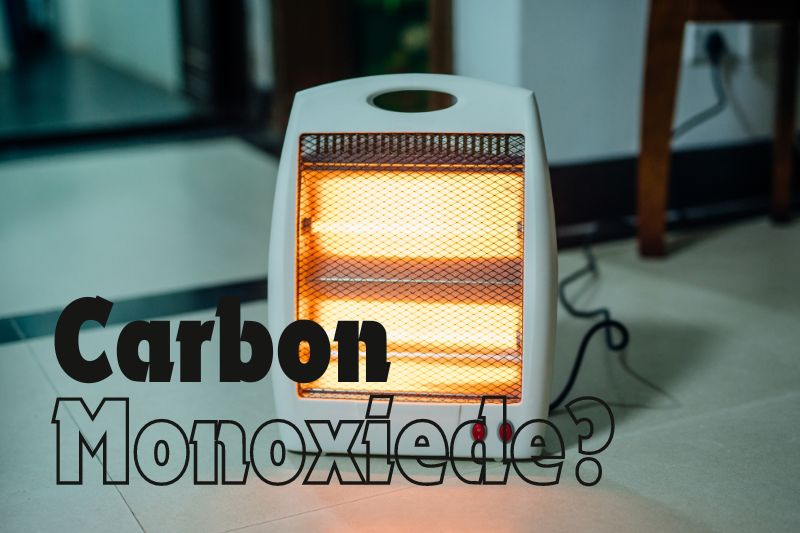Electric heaters are a common feature in many homes, particularly in areas where winters are harsh and unforgiving. They provide a convenient and efficient source of warmth, but with their use comes the responsibility of understanding their safety aspects.
One significant concern that often surfaces is whether electric heaters can cause carbon monoxide (CO) poisoning.
Carbon monoxide is a colorless, odorless gas that is produced by burning materials containing carbon. It can be extremely hazardous to humans and animals, leading to serious health issues and even death if inhaled in large quantities. Common sources of CO in homes include gas stoves, wood stoves, boilers, and open fires.
But what about electric heaters?
Electric Heaters and Carbon Monoxide Poisoning
Electric heaters, by their very design, do not produce carbon monoxide (CO) and therefore cannot cause carbon monoxide poisoning.
This is because electric heaters generate heat through electrical resistance rather than the combustion of fuels like natural gas, propane, or oil, which are the primary sources of CO in homes.
Unlike fuel-burning appliances, which can emit CO if they are not properly vented or maintained, electric heaters operate solely on electricity, making them inherently safe from this particular risk.
However, while electric heaters themselves are safe from producing CO, it’s important to remember that carbon monoxide can still be present in a home from other sources, such as gas stoves, fireplaces, or water heaters.
Therefore, even if you exclusively use electric heaters, having carbon monoxide detectors installed throughout your home is crucial for ensuring overall safety. These detectors can alert you to dangerous CO levels from other appliances, providing a necessary safeguard against this invisible and potentially deadly gas.
Electric Heaters 101
Electric heaters are a popular choice for home heating, especially in areas where gas lines are unavailable or where safety concerns about combustion-based heating methods arise. Understanding the fundamental operations of electric heaters and their differences from gas-powered heaters is essential for making informed decisions about home heating.
Operation and Energy Source
Unlike gas-powered heaters, which rely on the combustion of fuels such as natural gas, propane, oil, or wood, electric heaters use electricity as their sole power source.
The absence of fuel combustion means that electric heaters do not involve the burning of materials to generate heat.
Types of Electric Heaters
- Radiant Heaters: These heaters emit infrared radiation that directly warms objects and people in their line of sight.
- Convection Heaters: These heaters work by heating the air around them, which then circulates through the room, raising the overall temperature.
- Fan-Forced Heaters: These combine elements of both radiant and convection heaters by using a fan to blow heated air into the room, providing quicker warmth distribution.
Safety Considerations
Because electric heaters do not burn fuel, they inherently do not produce carbon monoxide (CO), a colorless, odorless, and potentially deadly gas that results from incomplete combustion.
This key difference significantly reduces the risk associated with CO poisoning, which is a serious concern with gas-powered heaters.
Environmental and Health Impact
Electric heaters are generally considered safer from a health perspective due to their lack of emissions.
However, the environmental impact of using electric heaters depends on the source of the electricity.
If the electricity comes from renewable sources, the environmental footprint is smaller compared to electricity generated from fossil fuels.
Energy Efficiency
Electric heaters are often lauded for their ability to convert electricity directly into heat with minimal loss, making them an appealing option for energy-conscious consumers.
The efficiency of these heaters is a crucial factor to consider when evaluating their overall performance and cost-effectiveness.
High Conversion Efficiency
One of the standout features of electric heaters is their near-perfect conversion efficiency. In many cases, these devices can convert nearly 100% of the electrical energy they consume into heat.
This contrasts with other heating methods, such as gas or oil-based systems, where some energy is inevitably lost during the combustion process.
Potential Risks with Faulty Equipment

While electric heaters are generally safe and do not produce carbon monoxide (CO) as a by-product, they are not entirely without risks. Understanding the potential dangers associated with faulty equipment is crucial for ensuring the safety of your home and loved ones.
Electrical Fire Hazards
One of the primary risks associated with electric heaters is the potential for electrical fires. This can occur if the heater’s wiring is damaged, frayed, or incorrectly installed. Faulty wiring can cause short circuits, leading to sparks that may ignite nearby combustible materials such as curtains, furniture, or carpeting.
Older heaters, or those that have not been properly maintained, may also pose a fire risk. Over time, internal components can wear out or become damaged, increasing the likelihood of overheating or malfunction.
Overloading Circuits
Electric heaters often draw significant power, especially when used in high settings or continuously for long periods.
Plugging an electric heater into an overloaded circuit or using multiple high-wattage appliances on the same circuit can cause the circuit breaker to trip or, worse, cause the wiring to overheat and potentially start a fire.
It’s essential to use electric heaters on a dedicated circuit whenever possible and avoid plugging them into extension cords or power strips, which may not be rated to handle the heater’s power requirements.
Electrical Shock Risks
Malfunctioning electric heaters can also pose a risk of electrical shock. It is particularly concerning if the heater’s casing is damaged or if internal wiring becomes exposed. Water exposure, such as from spills or high humidity, can exacerbate this risk by creating a conductive path for electricity.
Users should always ensure that heaters are kept away from water sources and that they are properly grounded to prevent the risk of electrical shock. Inspecting the heater regularly for signs of damage, such as exposed wires or loose connections, is critical for safety.
Safety First – Proper Maintenance and Usage
Ensuring the safe operation of electric heaters requires more than just plugging them in and turning them on.
Proper maintenance and careful usage are key to preventing accidents and ensuring the heater functions efficiently throughout its lifespan.
Regular Inspections
Before the start of each winter season, it’s advisable to have your electric heaters inspected and serviced by a qualified professional. A technician can check for any internal issues, such as worn-out components, dust buildup, or faulty wiring, that could pose safety risks or reduce the heater’s efficiency.
In addition to professional servicing, you should also perform regular self-checks throughout the season. Look for any visible signs of damage, such as cracks in the casing, unusual noises, or malfunctioning controls. If any issues are detected, discontinue use and have the heater inspected by a professional.
Follow Manufacturer Instructions
Each electric heater comes with specific instructions from the manufacturer on how to use it safely. These instructions should always be followed carefully. For instance, some heaters are designed for supplemental heating in small spaces and should not be used to heat large rooms or entire homes.
Never cover the heater or block its vents, as this can cause the unit to overheat, potentially leading to a fire. Ensure that the heater is placed in an open area with plenty of space around it to allow for proper airflow. Keep all flammable materials, such as curtains, blankets, and furniture, at least three feet away from the heater.
When positioning the heater, make sure it is on a flat, stable surface to prevent tipping. Avoid placing heaters in high-traffic areas where they might be knocked over or in damp environments like bathrooms unless the heater is specifically designed for such use.
Check the Cords
The electrical cord is one of the most vulnerable parts of an electric heater, and it should be regularly inspected for any signs of damage, such as fraying, cracking, or exposed wires. A damaged cord can lead to electrical shocks, short circuits, or even fires.
When unplugging the heater, always pull from the plug rather than the cord to prevent wear and tear. Never run the cord under carpets or rugs, as this can cause the cord to overheat or become damaged without your noticing.
If you notice any damage to the cord, do not attempt to repair it yourself. Instead, discontinue use and have the cord replaced by a professional or replace the entire heater if necessary. Using a heater with a damaged cord is a significant safety risk.
Carbon Monoxide Detectors: Why You Still Need Them
Even if your home relies exclusively on electric heaters, carbon monoxide (CO) detectors are a crucial safety device that should be present in every household. While electric heaters themselves do not produce CO, other common household appliances and systems do, making CO detectors an essential part of your home safety strategy.
Protection Against Hidden Dangers
Many homes have a variety of appliances and systems that rely on the combustion of fossil fuels, such as gas stoves, water heaters, fireplaces, and boilers. These appliances can produce carbon monoxide as a by-product of burning fuel.
CO can also be produced by vehicle exhaust if a car is left running in an attached garage, or from portable generators, charcoal grills, and gas-powered tools used indoors or too close to the home. Having CO detectors in place ensures that any of these potential dangers are quickly identified.
Comprehensive Home Safety
While your electric heaters might not contribute to CO levels, it’s vital to consider your entire home’s safety profile. CO detectors provide a comprehensive safety net, ensuring that any rise in carbon monoxide levels, regardless of the source, is detected early.
The risk of CO poisoning is particularly high during sleep when the occupants may not notice symptoms like dizziness or headaches, which are common warning signs of CO exposure. A functioning CO detector will alert you, even in the middle of the night, giving you and your family the chance to respond to the danger.
How CO Detectors Work
Understanding how carbon monoxide detectors function can help you appreciate their role in home safety and ensure they are properly installed and maintained.
CO Detection Mechanism
Carbon monoxide detectors are equipped with sensors that continuously monitor the air for the presence of CO. Different technologies are used in these sensors, including biomimetic, electrochemical, and metal oxide semiconductor sensors.
If the CO concentration rises to dangerous levels, the detector will emit a loud, piercing alarm, alerting all occupants to the immediate danger. Some detectors may also have digital displays showing the current CO level, providing real-time information about the air quality in your home.
Placement and Installation Tips:
- Strategic Locations: For optimal protection, CO detectors should be installed on every level of your home, including the basement. It is particularly important to place detectors near sleeping areas, as this ensures you will be alerted even during the night.
- Proper Installation Height: CO detectors can be mounted on walls or ceilings. Since CO is slightly lighter than air and can mix evenly with the air in a room, there is flexibility in placement.
- Regular Testing and Maintenance: To ensure your CO detectors are working properly, test them monthly by pressing the test button. Replace the batteries at least once a year, and be aware of the detector’s lifespan—most CO detectors need to be replaced every 5 to 7 years, as sensors can degrade over time.
Integrated Systems for Enhanced Safety
For added safety, consider installing interconnected CO detectors. In an interconnected system, if one detector senses CO and triggers an alarm, all the detectors in the system will sound, ensuring that everyone in the house is alerted, no matter where the CO is detected.
Many modern detectors combine both smoke and CO detection in a single unit, providing comprehensive protection against two major household risks. These combination units are convenient and can simplify installation by reducing the number of devices needed.
Summary

In summary, electric heaters do not produce carbon monoxide because they operate through electricity rather than fuel-burning processes. However, this does not eliminate the need for general safety precautions. Regular maintenance, proper use, and the presence of carbon monoxide detectors are all essential steps to ensure a safe and warm environment in your home.
Knowing the operation and safety requirements of your home heating system, whether electric or fuel-based, is crucial for preventing accidents and ensuring that your winter season is both warm and safe. Remember, safety in heating comes not just from the type of heater you use, but from how well you maintain and manage it.
FAQs
How often should carbon monoxide detectors be tested in a home with electric heaters?
Carbon monoxide detectors should be tested at least once a month to ensure they are working correctly, regardless of the presence of electric heaters. This helps ensure safety against CO from other sources in the home.
Is it safe to leave an electric heater on overnight?
It is generally recommended not to leave electric heaters running overnight. If it is necessary for warmth, use a heater with a thermostat and overheat protection features, and ensure it is away from any flammable materials.
Can using an electric heater in a bathroom be hazardous?
Yes, using any electrical device in a wet environment like a bathroom can be hazardous due to the risk of electric shock. If you must use a heater in the bathroom, ensure it is specifically designed for bathroom use and installed according to safety regulations.

